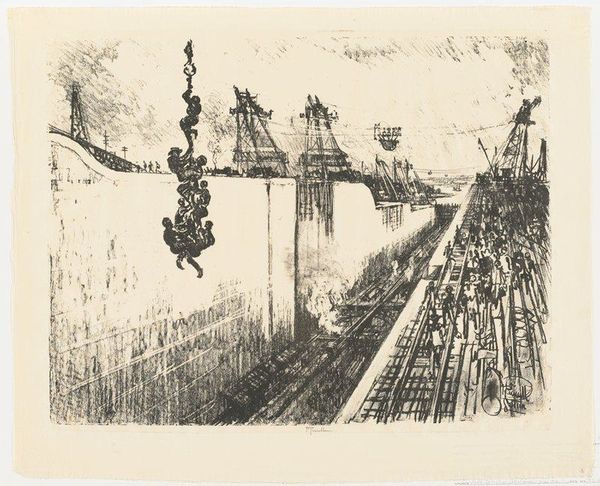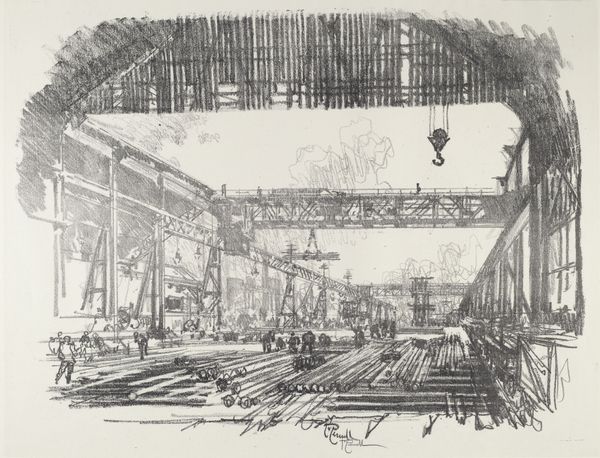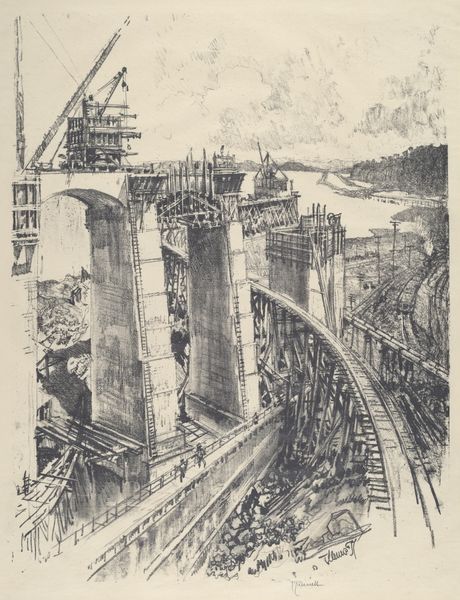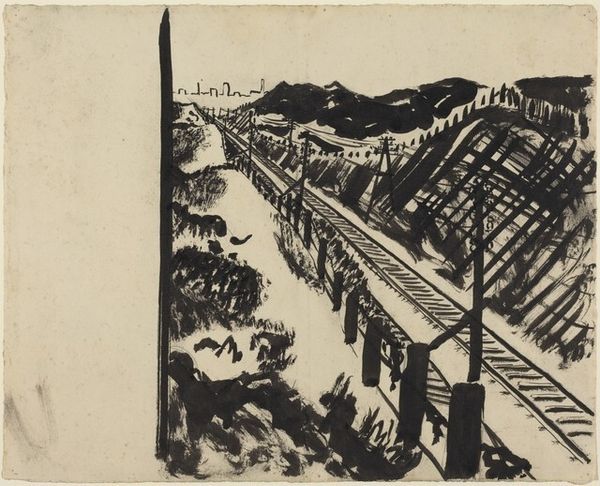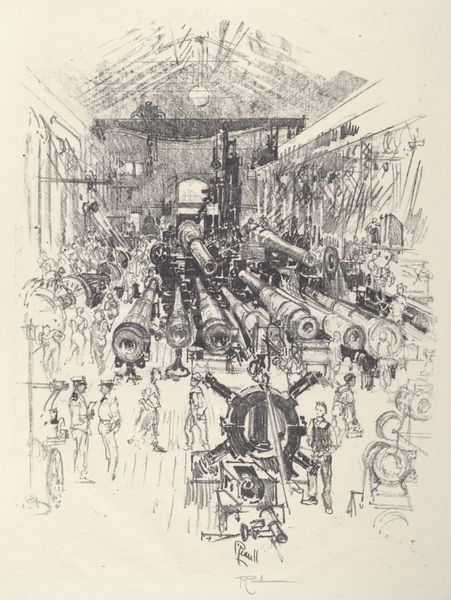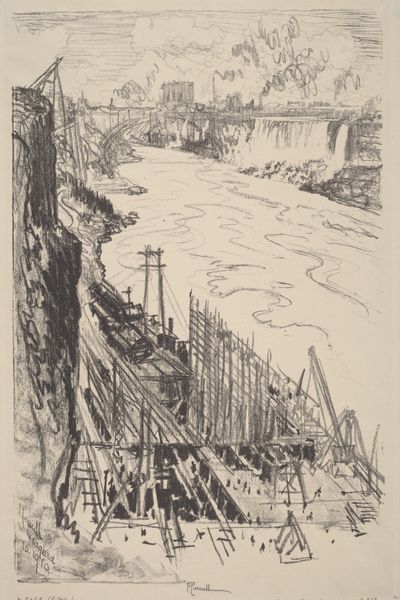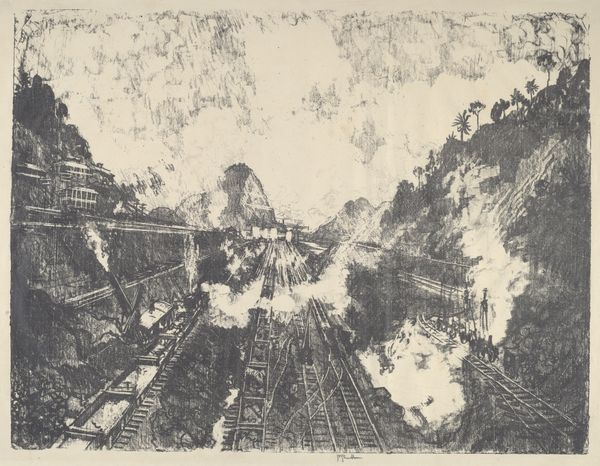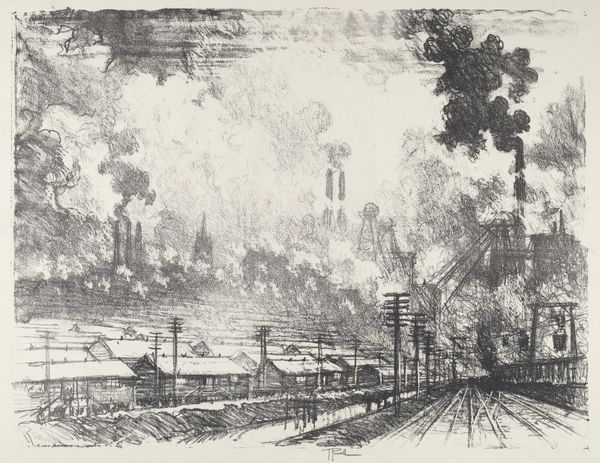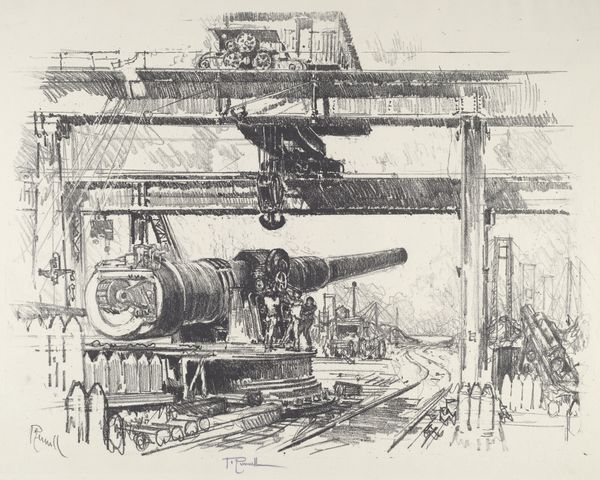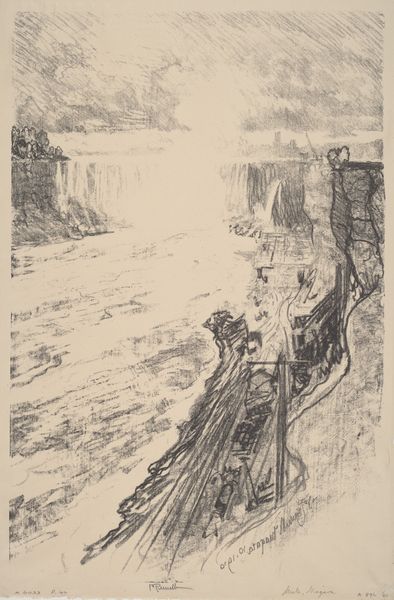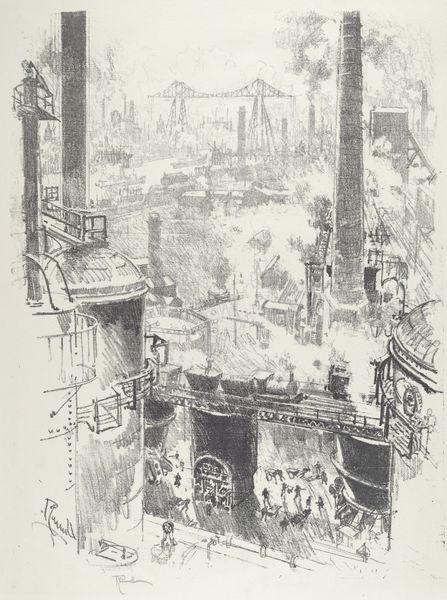
print, etching
# print
#
etching
#
landscape
#
constructionism
#
line
#
cityscape
#
modernism
Dimensions: image: 42.4 × 54.7 cm (16 11/16 × 21 9/16 in.) sheet: 51.7 × 63.7 cm (20 3/8 × 25 1/16 in.)
Copyright: National Gallery of Art: CC0 1.0
Curator: Joseph Pennell created this etching, “Dinner Time, Gatun Lock,” in 1912. What stands out to you initially? Editor: The immediate impression is of a colossal endeavor dwarfing the human figures, wouldn’t you say? A certain industrialized sublime overwhelms any notion of individual experience. Curator: Yes, Pennell has created a striking visual language. The sheer verticality of the lock walls, emphasized by the deeply etched lines, leads the eye relentlessly upwards. The composition presents us with sharp contrasts—between light and shadow, industry and humanity. Editor: It's difficult to overlook the visual symbolism, though. The dangling figures certainly provoke thought. Could this be about the relationship between the workers and the immensity of the engineering? They seem precariously suspended, quite literally at the mercy of this grand project. The Gatun Locks represent ambition but perhaps also exploitation. Curator: I can appreciate that, though my inclination is to study more specifically Pennell's artistic strategy. Note how he employed hatching and cross-hatching to build texture and dimension. Also consider his strategic placement of blank spaces to allow the forms to breathe—contributing to the overall visual impact, wouldn’t you agree? Editor: Decidedly, and I observe a sense of modern life within those details. Railroads extend like arteries, carrying raw materials and finished goods. The mechanical cranes loom like robotic figures dominating the horizon—and that hints at both a marvel and menace embedded in industrial innovation. Curator: I find it intriguing that while some may read it as bleak, there’s a dynamic visual interplay across this etching—creating a strangely vibrant mood despite the somewhat severe contrasts. Editor: Yes, it's a testament to art's capacity to provoke, to encapsulate diverse responses across different vantage points. It’s also evidence of cultural priorities at the dawn of the industrial century, wouldn’t you say?
Comments
No comments
Be the first to comment and join the conversation on the ultimate creative platform.
